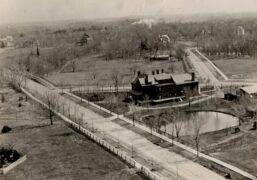Gazette Article by: Barbara Joyce Appeared in the Gazette: Spring 1998 What does a sculptor say when people claim that modern works are too difficult to understand? “It’s hard to explain,” responded Abbott Pattison, world-renowned sculptor and former Winnetka resident. In a recent telephone conversation with Pattison in Italy, he said, “Things are different now […]
Abbott Pattison
Categories: Gazette

